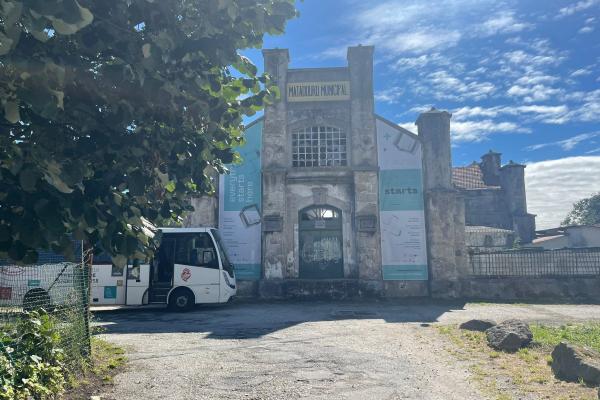
Demystifying the Innovative Actions transfer journey
Innovation transfer starts here
This week marks a significant step for the first call of EUI Innovative Actions (IA) projects. While others start preparing their summer holiday packing list, the Portuguese city of Viana do Castelo, gets ready to host international visitors of a different kind. It was one of fourteen cities that successfully bid for the first round of EUI Innovative Actions funding, with their Viana S+T+ARTS project, focused on attracting talent to their blue economy activity. This week, Viana will be the first of these 14 Main Urban Authorities (MUAs) to get their transfer activity started, when the cities of Brest, Brescia and Comarca de Farol join them for the Opening Site Visit.
In the coming months, the other 13 IA cities will get their own innovation transfer activity under way. Ahead of that, this article will examine what is meant by innovation transfer, have a look at how this will work, and, most importantly, reflect on why this matters.
The value of scaling
Let’s start with the last point – why does innovation transfer matter? The answer is quite simple. The EUI has already approved 36 IA projects in its first two rounds, with another wave starting in spring 2025. The transfer dimension will ensure that the learnings from these extend beyond the recipient cities, with each MUA sharing their experience with three other cities. Some quick arithmetic tells us that in these first two rounds alone, 144 cities will share the innovation journey, with many more to come.
But what exactly is innovation transfer…?
For EUI, innovation transfer has two main dimensions. The first relates to the innovation concept. In the case of the first wave of IA projects, which focused on the New European Bauhaus this will enable transfer cities to investigate the replication potential of the innovation model. Of course, this is rarely a ‘copy paste’ process, and it’s expected that transfer partners will explore ways to adapt the original innovation in line with their own context and priorities.
The second dimension of the transfer process focuses on the so-called ‘innovation ecosystem’, where the ambition is to build the innovation capacity of cities across the EU. From this perspective, the emphasis is on the local structures, partnerships and mechanisms that foster successful innovation approaches. We might take Fuenlabrada in Spain, as a good example here. A small city with a population of under 200,000, Fuenlabrada has punched above its weight to secure funding for two Innovative Action projects (one under UIA, the other under EUI).
The new Fuenlabrada project, SHARE, proposes a radical solution to address the common challenge of housing affordability faced by young people, through a pioneering inter-generational concept. The transfer partners who come to the city for the Opening Site Visit in September are keen to fully understand the big idea, but also to get insights into the ‘magic sauce’ that has powered Fuenlabrada’s successful design and implementation of these innovative solutions.
And how is all of this going to work….?
Rather than having a final ‘big reveal’ at the end, IA transfer partners are involved from the early stages, giving them a front row seat for the entire innovation journey. But they are not simply there as empty vessels waiting to be filled with knowledge. On the contrary, they are encouraged to assume an active role and to fully contribute to the implementation of the IA concept. This is a two-way street, where smart Main Urban Authorities will fully maximise the know-how that transfer partners can bring.
That journey starts with creating a deep understanding of the concept itself, supported by the EUI transfer expert team who will produce an Innovation ID card after the opening site visit. Using this, transfer partners will then consider the potential to adapt the concept to their own context, designing their own transfer process within the EUI transfer framework which will include space to design and pilot a local prototype based on the IA concept. In practice this will comprise a shared transfer roadmap for all of the partners, with scope for each to customise their own journey, reflecting their distinctive starting point and priorities.
Finally, what does success look like?
A good future would generate a myriad of successful innovation spin-off projects, addressing key sustainable urban development challenges in cities of all sizes across the EU. In addition to the implementation of the original IA projects, the transfer process will have supported the design, development and eventual delivery of a further innovation wave, thus improving our cities and the lives of EU citizens.
Behind that, EUI will have enhanced the innovation capacity of participating cities, who will have strengthened their own innovation ecosystems, in readiness for the opportunities and challenges that lie ahead. Are you from a city and want to be part of it all? Why not check out the third call under themes of Energy Transition and Technology in Cities, open until 14th October 2024.


